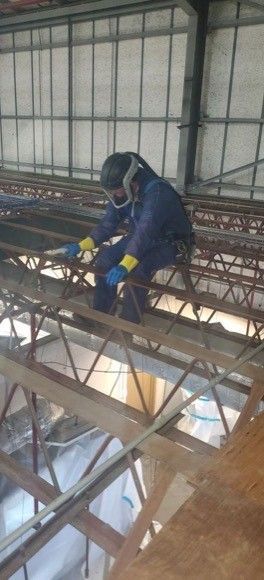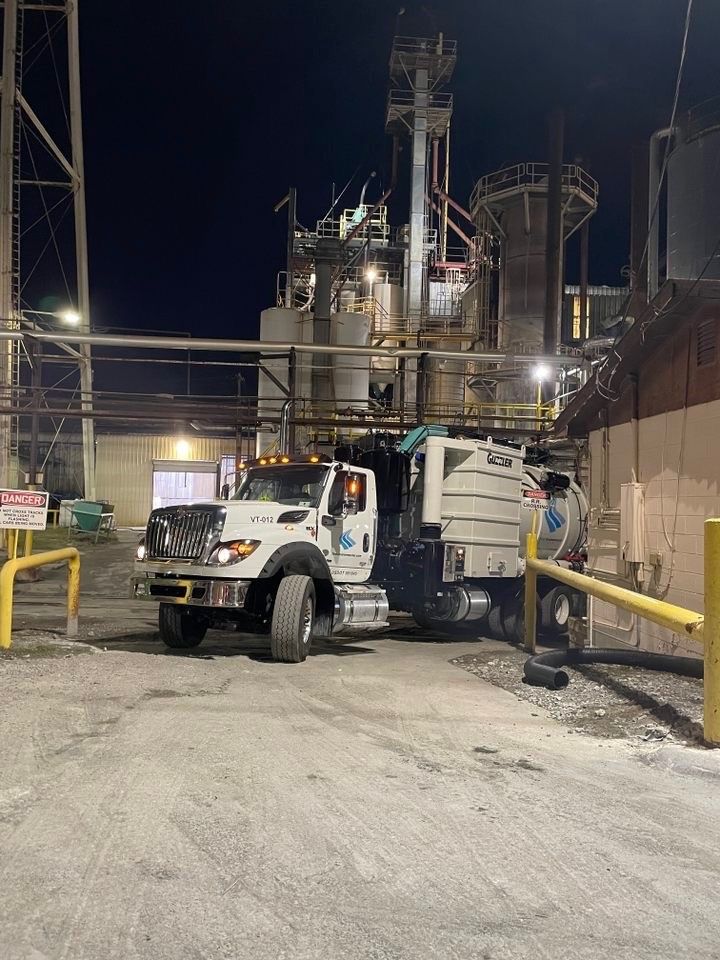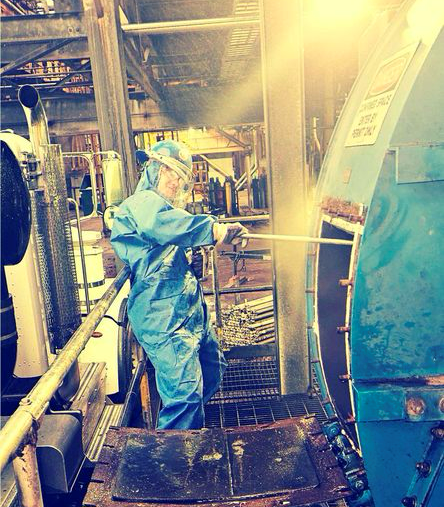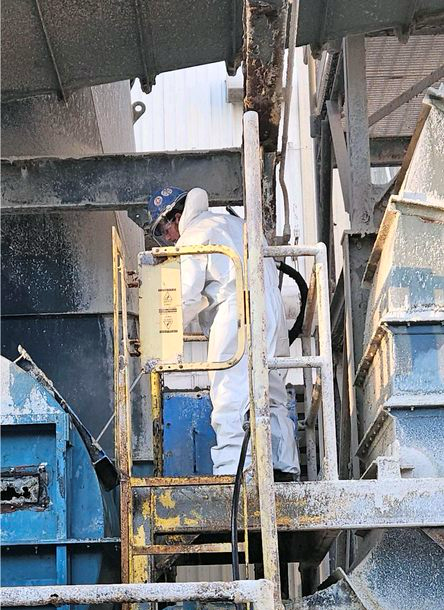Heavy Metal Dust Abatement Services
Health Risks of Heavy Metal Dust
Heavy metal dust (HMD) and its abatement is required in a few places that have hazardous and nonhazardous metals within their service mix. Aircraft manufacturing and maintenance facilities are the most frequent, but plating shops, electronic manufacturers, metal forming/shaping, metal cutting/grinding can also generate metals that lead to exposures.
The most common heavy metals are chromium (particularly hexavalent), cadmium and lead. Metals such as arsenic, selenium, mercury, silver and barium are also on the list of RCRA (regulated hazardous) metals.
Heavy metals are hazardous substances. HMD can be transmitted in the air or via physical contamination. It can get into the lungs, moist tissue (eyes, mouth, nose) and skin, causing immediate or long-term health issues.
Heavy metal dust abatement services are for safely and compliantly removing this hazard from contaminated areas.
Our Abatement Process
Safety
HMD is highly regulated because it can impact human health and the environment. Long-term concerns about prolonged exposure, or exposure to high levels of metal is why precautions are so important. Identifying potential sources of heavy metal and sampling provide a roadmap to abatement. Sampling professionals, trained and certified in heavy metal sampling, conduct physical samples (usually wipe tests) that qualify the presence of the suspected material. Personal sampling is also conducted using pumps that collect heavy metal particles and confirm the requirements for proper PPE (personal protective equipment including respirators). An effective level of abatement is usually measured by improvement from baseline sampling to reflect a prescribed efficiency, (eg. 90% reduction).
The removal of heavy metal dust is accomplished by wetting with a “metal-philic” solution and wiping down all surfaces that have contamination, and collecting all related materials into containers for proper hazardous waste disposal.
Disposal
The resulting abated material is likely to be hazardous waste based on quantities above the TCLP threshold (toxic characteristic leaching procedure) found in 40 CFR 261.24:

Regulatory Compliance in Waste Disposal
Disposal
The resulting abated material is likely to be hazardous waste based on quantities above the TCLP threshold (toxic characteristic leaching procedure) found in 40 CFR 261.24:
| EPA Code | Containment | Regulatory Level (mg/L) |
|---|---|---|
| D004 | Arsenic | 5.0 |
| D005 | Barium | 100.0 |
| D006 | Cadmium | 1.0 |
| D007 | Chromium | 5.0 |
| D008 | Lead | 5.0 |
| D009 | Mercury | .2 |
| D010 | Selenium | 1.0 |
| D011 | Silver | 5.0 |
It can only be sent to facilities that have permits in place to receive, and has detailed, compliance paperwork that require the generator, the transporter and the final disposition to be evaluated for compliance with all regulations. These steps are all managed under either State or Federal agencies depending on the location. In Georgia, the Environmental Protection Division (GA EPD) is the regulatory authority. The Department of Transportation (DOT) regulates the shipping of hazardous materials/wastes.
Summary
When evaluating and performing heavy metal abatement projects, it is important to have experience in scoping and understanding what the client needs. Then making it happen with quality, efficiency, compliance and safety.
First Environmental has carefully trained estimators, supervisors and support staff that manage these processes to address our customer’s industrial cleaning and abatement needs, and provide detailed paperwork support to demonstrate compliance.
Our mission: Exist for our Customers by Fixing Their Problem, and Making Them Happy.
Ensure the safety and compliance of your operations with our expert heavy metal dust abatement services. Contact First Environmental today to schedule a consultation and safeguard your workplace from hazardous metal exposure. Call us at 888-720-1330 or visit our website to learn more and take the first step towards a safer environment!





